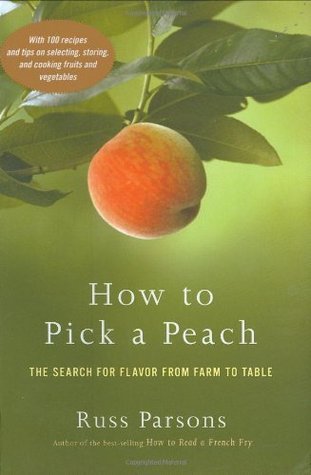What do you think?
Rate this book


412 pages, Hardcover
First published May 9, 2007
"Eat locally, eat seasonally." A simple slogan that is backed up by science and by taste. The farther away from the market something is grown, the longer it must spend getting to us, and what eventually arrives will be less than satisfying. Although we can enjoy a bounty of produce year-round -- apples in June, tomatoes in December, peaches in January -- most of it is lacking in flavor. In order to select wisely, we need to know more. Where and how was the head of lettuce grown? When was it picked and how was it stored? How do you tell if a melon is really ripe? Which corn is sweeter, white or yellow?
Russ Parsons provides the answers to these questions and many others in this indispensable guide to common fruits and vegetables, from asparagus to zucchini. He offers valuable tips on selecting, storing, and preparing produce, along with one hundred delicious recipes. Parsons delivers an entertaining and informative reading experience that is guaranteed to help put better food on the table.